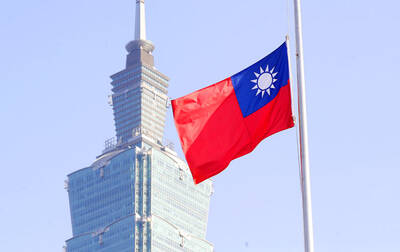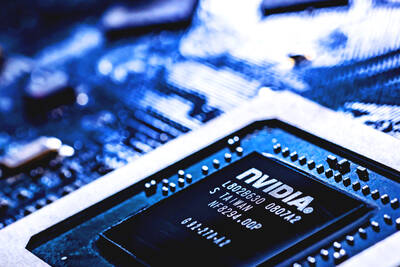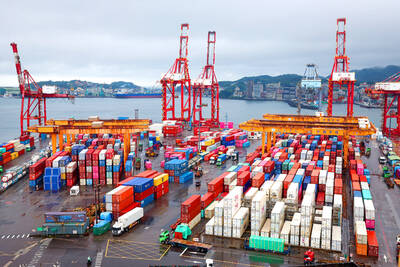Global flat panel sales are forecast to grow at a slower pace from this year through 2015 as retail and corporate buyers cut back on spending amid the worldwide economic gloom, market researcher DisplaySearch said in its latest report.
In its latest forecast, the Austin, Texas-based researcher said global flat panel revenues may reach US$124 billion in 2014 — instead of this year as it had projected in the third quarter of 2007.
Since the third quarter of last year, panel pricing, which has already been hit with a supply glut because of overcapacity, fell further as consumer behavior changed in response to the economic crisis, DisplaySearch said in the report dated Jan. 27.
Consumer surveys and retail data compiled by NPD, DisplaySearch’s parent company, showed that such behavioral changes may persist. Moreover, the behavior change is spreading to areas outside of Europe and North America.
With panel prices falling at a faster rate amid weakening demand, DisplaySearch cut its forecast for flat panel revenues between this year and 2015 by 15 percent from the projections it made in the final quarter of 2007. It did not provide detailed figures.
“Reduced price expectations create most of this difference,” David Barnes, DisplaySearch’s vice president of strategic analysis, said in the report.
Over the seven-year period, the average price of flat panels may drop 9 percent faster than its previous forecast, the report said.
The average price fell to about US$29 last year and could drop about 2 percent a year to US$25 in 2015, DisplaySearch said.
In a separate report, DisplaySearch said computer and TV revenues plunged 57 percent year-on-year to US$3 billion last month, marking the lowest level since July 2006.
DisplaySearch also found that panel demand weakened significantly in all three of the major applications for thin-film-transitor liquid-crytal displays (LCD) — notebook PCs, monitors and televisions — and panel suppliers had reduced capacity utilization.
Monitor panel shipments posted the largest fall, by 31 percent year-on-year to 10.7 million units last month, which is the lowest level since June 2006.
A combination of slow demand, leading brands relying more on in-house production and the sharp depreciation of the Korean won adversely affected Taiwanese panel suppliers, leading to loss of market share.
At the end of last year, Taiwanese LCD panel makers held about 35 percent of the market, down from 43 percent last July, while South Korean makers gained market share to 52.1 percent from 43.9 percent, DisplaySearch’s tally showed.

ELECTRONICS BOOST: A predicted surge in exports would likely be driven by ICT products, exports of which have soared 84.7 percent from a year earlier, DBS said DBS Bank Ltd (星展銀行) yesterday raised its GDP growth forecast for Taiwan this year to 4 percent from 3 percent, citing robust demand for artificial intelligence (AI)-related exports and accelerated shipment activity, which are expected to offset potential headwinds from US tariffs. “Our GDP growth forecast for 2025 is revised up to 4 percent from 3 percent to reflect front-loaded exports and strong AI demand,” Singapore-based DBS senior economist Ma Tieying (馬鐵英) said in an online briefing. Taiwan’s second-quarter performance beat expectations, with GDP growth likely surpassing 5 percent, driven by a 34.1 percent year-on-year increase in exports, Ma said, citing government

UNIFYING OPPOSITION: Numerous companies have registered complaints over the potential levies, bringing together rival automakers in voicing their reservations US President Donald Trump is readying plans for industry-specific tariffs to kick in alongside his country-by-country duties in two weeks, ramping up his push to reshape the US’ standing in the global trading system by penalizing purchases from abroad. Administration officials could release details of Trump’s planned 50 percent duty on copper in the days before they are set to take effect on Friday next week, a person familiar with the matter said. That is the same date Trump’s “reciprocal” levies on products from more than 100 nations are slated to begin. Trump on Tuesday said that he is likely to impose tariffs

HELPING HAND: Approving the sale of H20s could give China the edge it needs to capture market share and become the global standard, a US representative said The US President Donald Trump administration’s decision allowing Nvidia Corp to resume shipments of its H20 artificial intelligence (AI) chips to China risks bolstering Beijing’s military capabilities and expanding its capacity to compete with the US, the head of the US House Select Committee on Strategic Competition Between the United States and the Chinese Communist Party said. “The H20, which is a cost-effective and powerful AI inference chip, far surpasses China’s indigenous capability and would therefore provide a substantial increase to China’s AI development,” committee chairman John Moolenaar, a Michigan Republican, said on Friday in a letter to US Secretary of

‘REMARKABLE SHOWING’: The economy likely grew 5 percent in the first half of the year, although it would likely taper off significantly, TIER economist Gordon Sun said The Taiwan Institute of Economic Research (TIER) yesterday raised Taiwan’s GDP growth forecast for this year to 3.02 percent, citing robust export-driven expansion in the first half that is likely to give way to a notable slowdown later in the year as the front-loading of global shipments fades. The revised projection marks an upward adjustment of 0.11 percentage points from April’s estimate, driven by a surge in exports and corporate inventory buildup ahead of possible US tariff hikes, TIER economist Gordon Sun (孫明德) told a news conference in Taipei. Taiwan’s economy likely grew more than 5 percent in the first six months